1. Koogle Flavored Peanut Butter
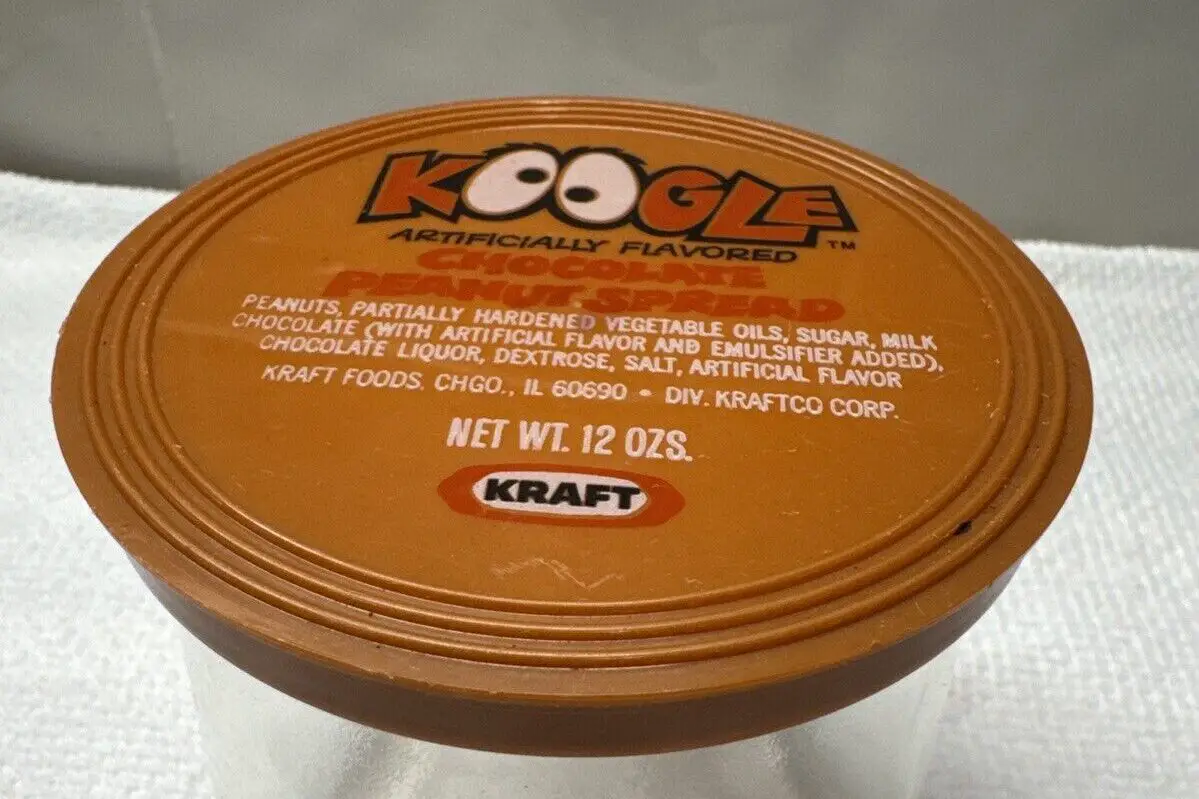
If you were a kid in the ’70s, you probably remember Koogle, the peanut butter that came in flavors like chocolate, banana, vanilla, and cinnamon. It was marketed as a fun way to get kids to eat peanut butter, but looking back, it was basically a sugar bomb in a jar. Peanut butter is already high in fat, but when you add artificial flavors and sweeteners, it turns into more of a dessert than a healthy snack. The banana flavor in particular was wildly artificial, tasting more like banana candy than actual bananas says LI Press. Kids loved it, but parents probably didn’t realize just how much sugar they were slathering on their kids’ sandwiches. It wasn’t just a light sprinkle of flavor—it was a full-on transformation that turned PB&J into something closer to cake frosting. If you tried to bring this back today, parents would riot over the sugar content alone. Not to mention, peanut butter is already a controversial food in schools due to allergies.
Most schools today have peanut-free zones, if not full bans, making something like Koogle an absolute no-go. The brightly colored jars and catchy jingle made it seem like a fun, harmless snack, but nutritionists would take one look at the ingredient list and immediately veto it. And let’s not forget that artificial food dyes have fallen out of favor due to concerns about hyperactivity in kids. Koogle had the kind of bright, unnatural look that would raise eyebrows today. It was discontinued by the late ’70s, likely because parents started realizing it wasn’t the healthiest option. Even if someone tried to bring it back with a “healthier” spin, it still wouldn’t make the cut in most households. These days, nut butters are all about being natural, with just peanuts and maybe a little salt. The idea of banana-flavored peanut butter might still sound fun, but parents today are way more label-conscious explains Eat This Not That.
2. Funny Face Drink Mix
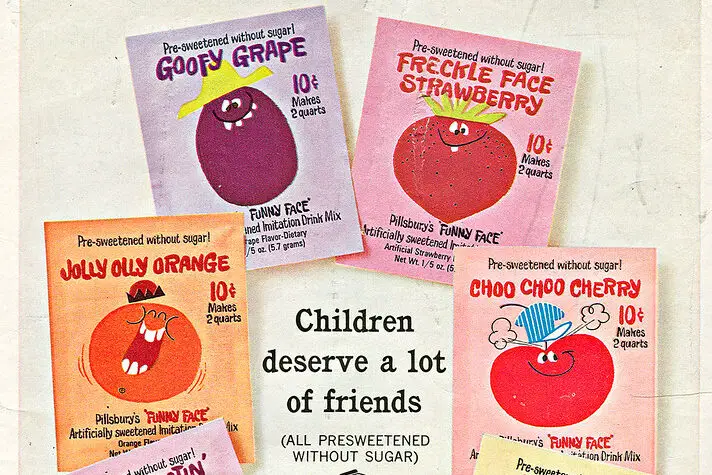
Long before kids were sipping on Capri Suns, they were mixing up their own sugary drinks with Funny Face Drink Mix. It was kind of like Kool-Aid, but with way more personality, featuring characters like Goofy Grape, Jolly Olly Orange, and Choo Choo Cherry. Each packet came with a little scoop so you could measure out the right amount of mix, but let’s be honest—kids just dumped as much as they wanted into their water. The result was a drink that was basically just sugar, artificial flavors, and neon-colored food dye. Some of the original flavors even contained cyclamate, an artificial sweetener that was later banned in the U.S. due to cancer concerns. Parents thought they were giving their kids a fun alternative to soda, but in reality, it was just as bad, if not worse. Even after they removed the cyclamate, the drink was still a nutritionist’s nightmare says Cartoon Brew.
Another reason Funny Face wouldn’t fly today? The original packaging featured some wildly inappropriate mascots, including Chinese Cherry and Injun Orange. These offensive characters were eventually changed, but the fact that they existed at all would make this brand completely unmarketable today. Beyond that, modern parents are far more concerned about what’s in their kids’ drinks, and brightly colored, sugar-laden powders are not on the list of acceptable options. The artificial dyes alone would scare off a lot of parents, given the concerns about hyperactivity and other health risks. Even Kool-Aid, which is still around, has toned things down over the years. If you tried to bring back Funny Face today, you’d have to completely reinvent it with natural flavors, no dyes, and probably a whole lot less fun. The days of kids dumping neon powder into a cup and calling it juice are long gone.
3. Space Food Sticks
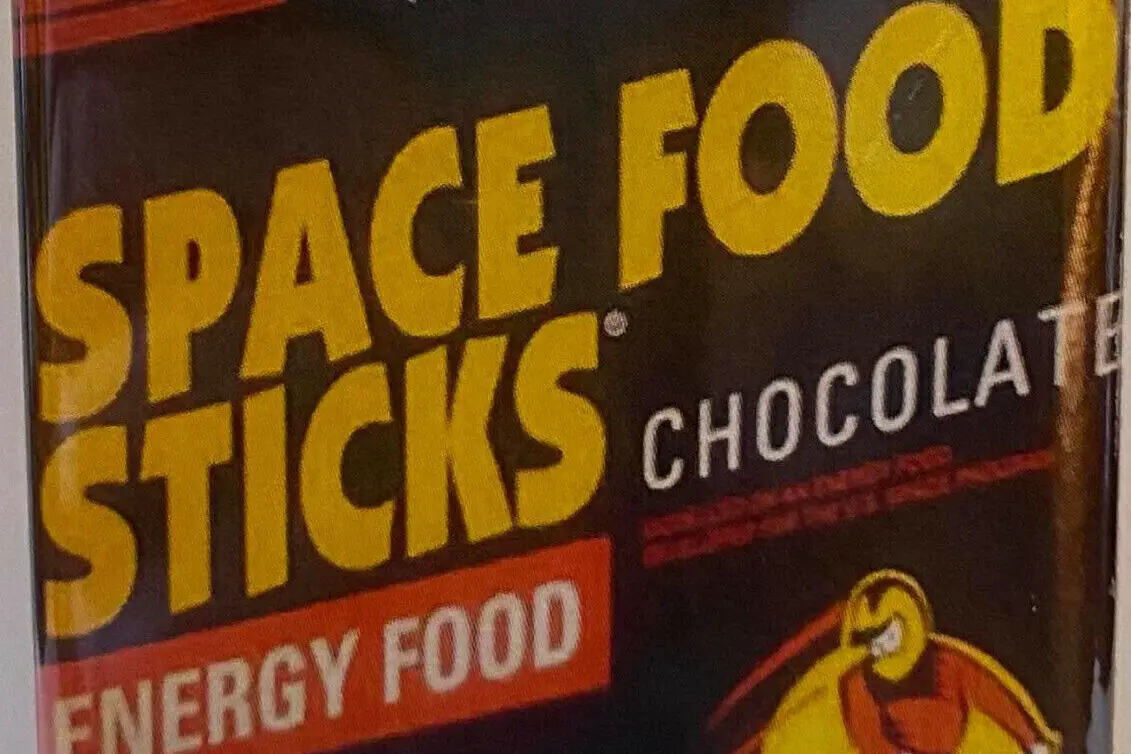
Marketed as a futuristic snack inspired by NASA astronauts, Space Food Sticks were basically the ’70s version of an energy bar—but with way more sugar and questionable ingredients. They were supposed to be a high-protein, high-energy treat that kids could eat on the go, but in reality, they were more like chewy, flavorless Tootsie Rolls with a weird aftertaste. Kids thought they were cool because they were supposedly what astronauts ate, but let’s be honest—if astronauts really ate these, they probably weren’t happy about it says General Mills. They came in flavors like peanut butter, caramel, and chocolate, but none of them tasted quite right. The texture was bizarre—somewhere between taffy and a stale protein bar. You had to really work to chew them, which probably made them last longer than most snacks.
Today, these would be a nightmare for food safety regulations. Not only were they packed with preservatives and artificial flavors, but they also didn’t exactly scream “nutritious.” Modern parents want their kids’ snacks to be organic, natural, and free from weird chemicals. The marketing gimmick of “astronaut food” might still appeal to kids, but parents would take one look at the ingredient list and put it right back on the shelf. The bars were also kind of a choking hazard, given how dense and chewy they were. You don’t see many snacks marketed as “space food” anymore, probably because the novelty wore off once people realized real astronaut food isn’t exactly appetizing. In the ’70s, kids loved anything space-related, but today, they’d probably take one bite of a Space Food Stick and ask for a granola bar instead.
4. Jell-O 1-2-3
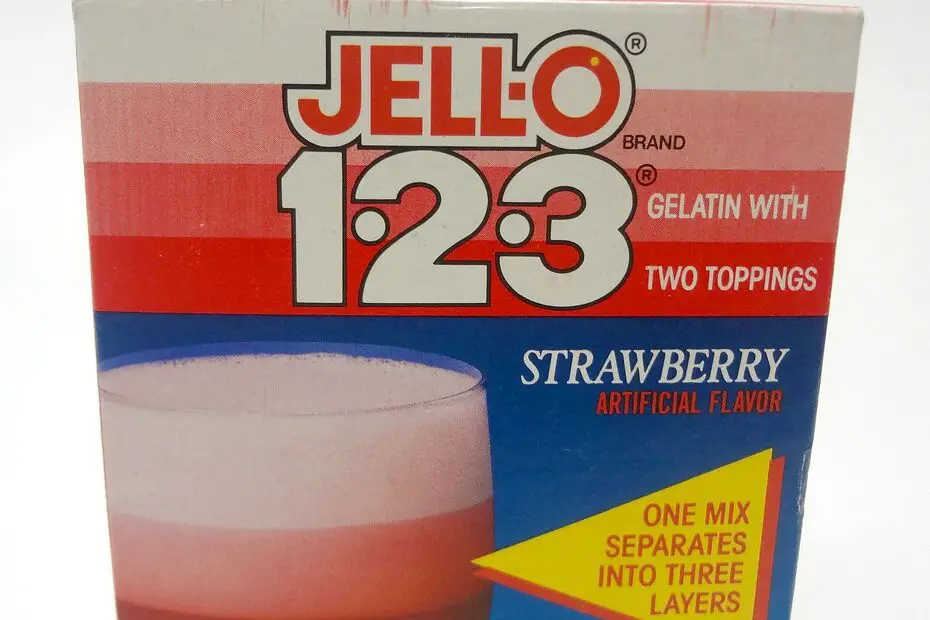
Jell-O 1-2-3 was the ultimate science experiment in a cup, promising three layers of texture from just one mix. When you made it, the bottom stayed gelatin, the middle turned creamy, and the top became a frothy mousse. It felt like magic to kids, but looking back, it was more of a chemical experiment than an actual food. The ingredient list was packed with artificial colors, flavors, and stabilizers to create that layered effect. The texture was fun, but the taste was questionable—kind of like Jell-O mixed with a melted marshmallow. Kids loved the idea, but parents today would balk at the sheer amount of artificial ingredients involved. It was basically a sugar-loaded science trick disguised as dessert.
Jell-O 1-2-3 would never make it in today’s clean-eating world. With so many families opting for natural, organic ingredients, a snack that relies entirely on food science to hold itself together wouldn’t stand a chance. Plus, anything that involves multiple chemical stabilizers to create its signature layers is an instant red flag for health-conscious parents. There’s also the fact that mousse-style desserts have fallen out of favor for kids’ snacks—yogurt and fruit-based options dominate the shelves now. Even if Jell-O tried to bring this back, they’d have to overhaul the recipe to remove all the artificial dyes and preservatives. And let’s be honest, without those, it probably wouldn’t work the same way. Kids might have had fun watching it form, but parents today wouldn’t be thrilled about serving up a bowl of chemicals for dessert.
5. Marathon Bar
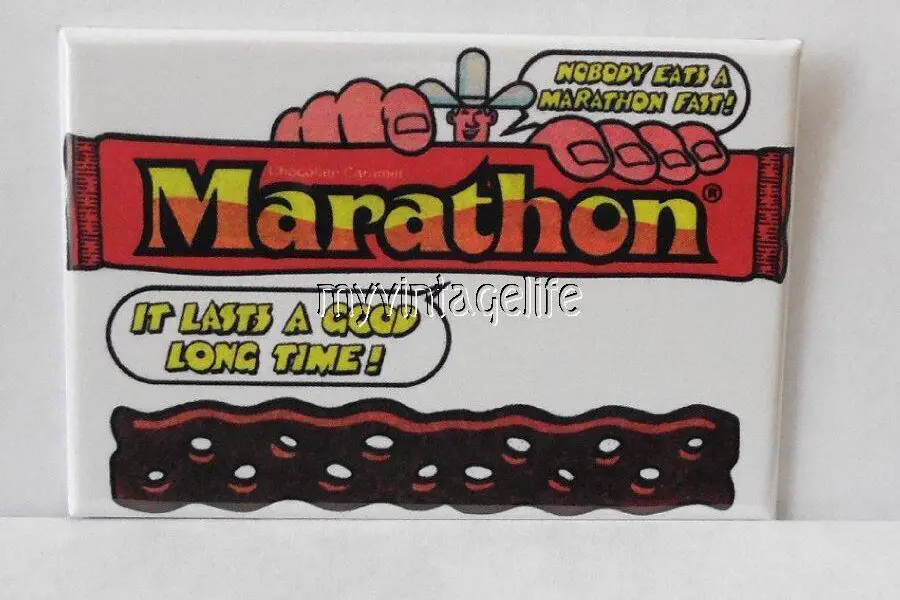
The Marathon Bar was a legendary chocolate treat in the ’70s, famous for its long, braided shape and caramel-filled center. It was literally advertised as “lasting a good long time,” and they weren’t kidding—this thing took forever to eat. The caramel was so thick and chewy that it practically glued your teeth together. Kids loved the challenge of making it through an entire bar, but dentists probably weren’t as enthusiastic. The amount of sugar in each bar was off the charts, and the chewy texture meant it stayed in your mouth longer, coating your teeth with a sticky, sugary mess. It was basically a cavity waiting to happen. And let’s not forget the size—this wasn’t a normal candy bar; it was a full eight inches long, which is way bigger than anything you’d see today.
If Marathon Bars still existed, they’d never pass today’s nutritional standards. Parents are way more conscious of portion sizes, and an oversized candy bar that encourages kids to keep chewing on sugar for minutes at a time wouldn’t go over well. Plus, the caramel was so thick that it was a choking hazard for younger kids. Nowadays, snack foods are expected to be at least somewhat responsible—fun, but not aggressively unhealthy. Even the biggest candy brands have toned things down over the years, offering mini sizes or lower-sugar versions. The Marathon Bar was basically the opposite of that philosophy. It disappeared in the early ’80s, and while some people still miss it, there’s a reason no one’s brought it back. A candy bar that was specifically designed to take longer to eat wouldn’t survive in today’s snack landscape.
6. Pop Rocks & Soda
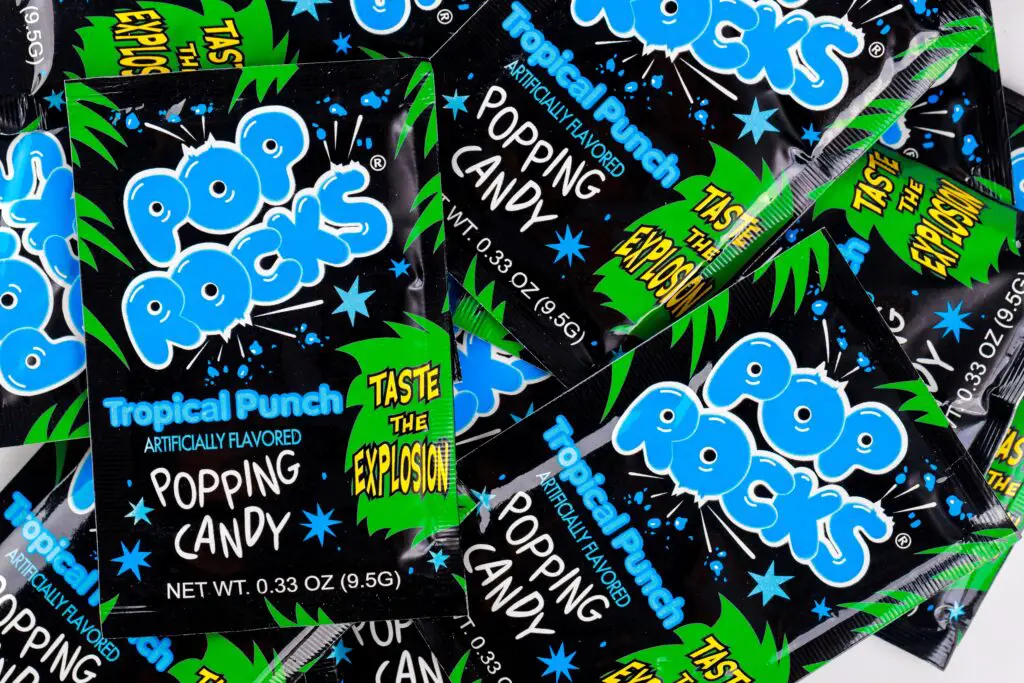
Pop Rocks on their own were already controversial, but the real panic set in when kids started combining them with soda. There was a whole urban legend that if you drank a Coke while eating Pop Rocks, your stomach would explode. Of course, that wasn’t true, but it didn’t stop kids from testing the theory. The sensation of fizzy candy mixed with carbonation was basically an extreme sport for snack time. Every kid who tried it felt like they were breaking the rules, even though nothing bad actually happened. The worst thing you’d get was an uncomfortable amount of fizz in your mouth, but that was part of the fun. Parents, however, weren’t thrilled about their kids turning snack time into a science experiment.
Today, Pop Rocks are still around, but they’re nowhere near as popular, and you’d never see them actively marketed alongside soda. The combination of pure sugar, artificial dyes, and carbonation would send most modern parents running. Not to mention, the whole “your stomach will explode” rumor may have been false, but the choking hazard was very real. Trying to drink soda while Pop Rocks were still fizzing in your mouth was a recipe for disaster. Kids would accidentally inhale the tiny candy pieces or start coughing uncontrollably. Schools today are way stricter about what kids can bring for lunch, and something as chaotic as Pop Rocks and soda wouldn’t stand a chance. The ’70s were a wild time for snacks, but parents now are way less willing to let their kids experiment with potentially hazardous food combos.
7. Nabisco Screaming Yellow Zonkers
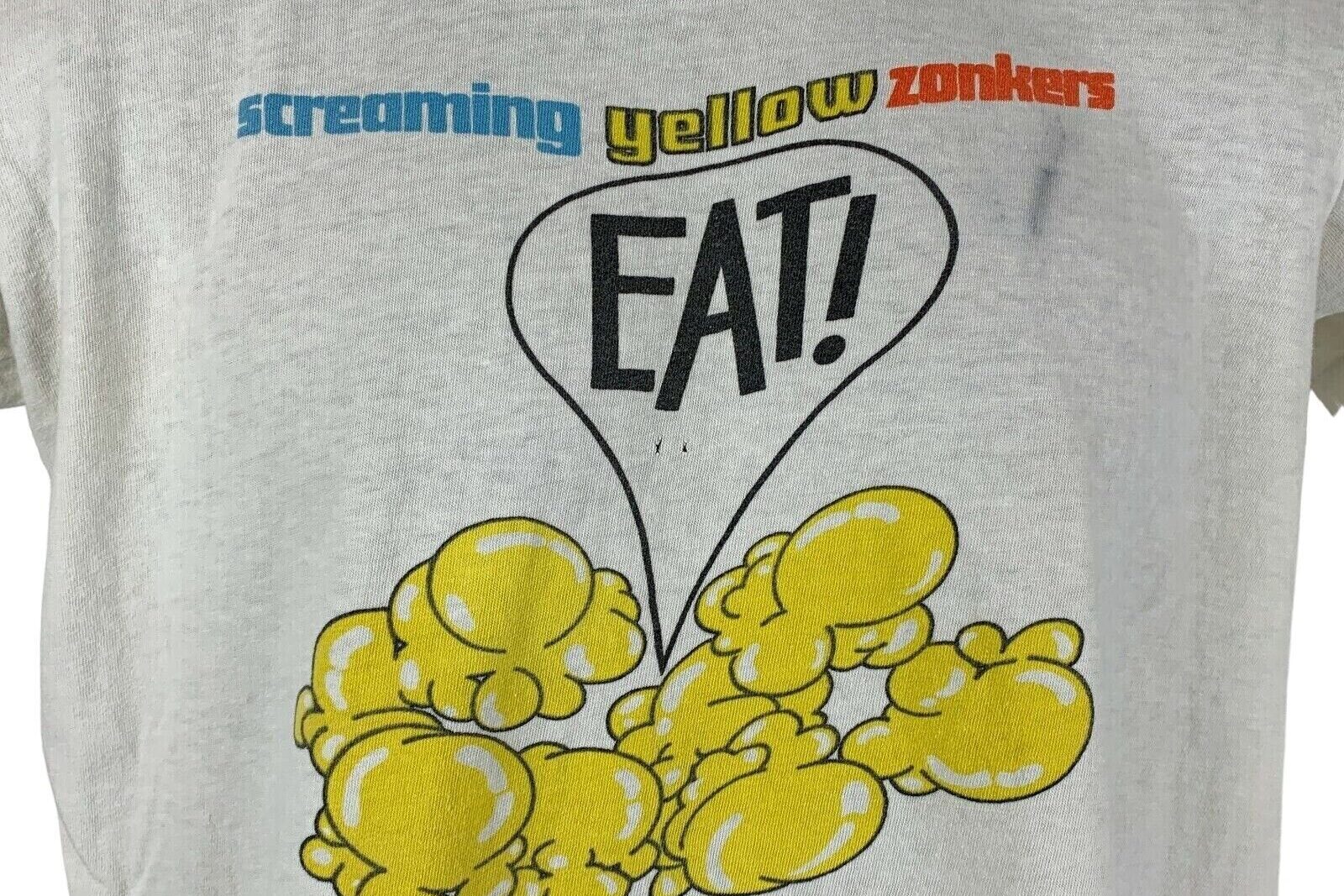
If the name alone doesn’t scream “’70s snack fever dream,” I don’t know what does. Screaming Yellow Zonkers were caramel-coated popcorn with an electric yellow color so bright it could probably be seen from space. The popcorn itself was light and crunchy, but the coating was packed with sugar, artificial flavoring, and a ridiculous amount of food dye. The flavor was oddly addictive, but it was also tooth-achingly sweet, making Cracker Jack look like a health food by comparison. The packaging was just as outrageous as the snack itself, featuring wacky, psychedelic illustrations that made it seem like something straight out of a Saturday morning cartoon. Parents might not have realized it at the time, but these things were basically just popcorn drenched in sugar, with no nutritional value whatsoever.
Today, a snack with this much artificial coloring and sugar would have a hard time making it onto store shelves. Not only have food dyes like Yellow 5 been linked to hyperactivity in kids, but popcorn coated in a thick layer of sugar isn’t exactly a balanced snack. Modern parents are more likely to reach for organic popcorn with a light dusting of sea salt than something that looks like it was designed by a mad scientist. Plus, the whole “screaming yellow” branding doesn’t help—people today are more cautious about what goes into their food, and a snack that brags about its unnatural color wouldn’t be an easy sell. It was fun while it lasted, but snacks like this belong firmly in the past.
8. Hostess Choco-Diles
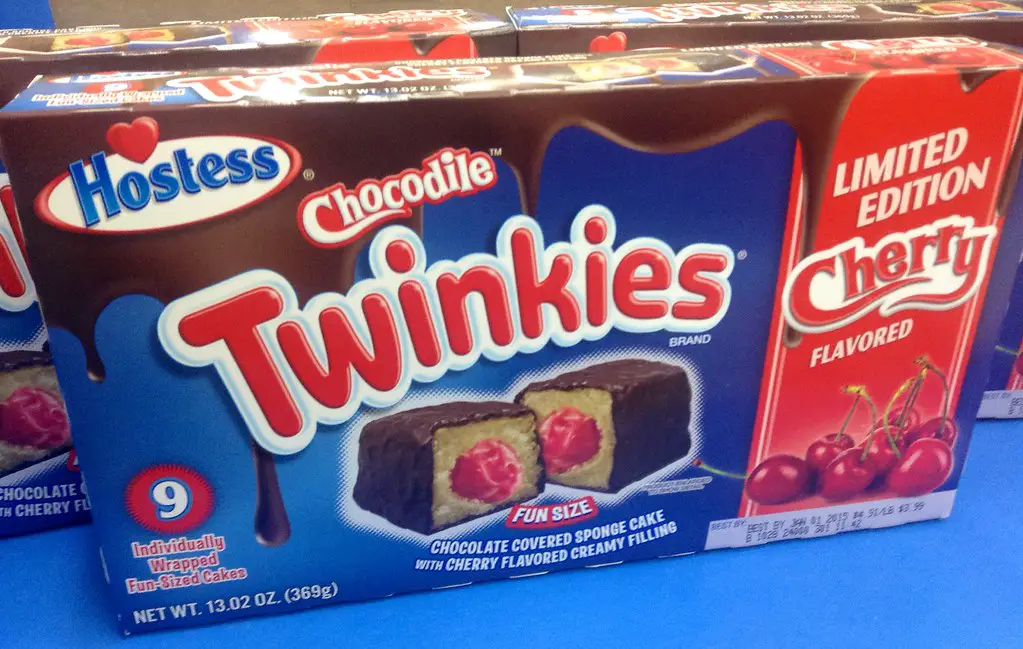
Choco-Diles were basically chocolate-covered Twinkies, which sounds like the kind of treat kids dream about but nutritionists have nightmares over. Twinkies on their own were already considered a guilty pleasure, packed with sugar, preservatives, and that iconic but mysterious cream filling. But Hostess took things a step further by coating the whole thing in a thick layer of chocolate, making it even more indulgent. The result was a snack so rich and sweet that it almost felt like a challenge to eat the whole thing. And let’s not forget the shelf life—like Twinkies, Choco-Diles were rumored to last forever thanks to all the preservatives. This was not a snack that could be classified as remotely natural.
In today’s world, where ingredient transparency is everything, Choco-Diles wouldn’t stand a chance. Parents are way more aware of what’s in their kids’ snacks, and a deep-fried cake drenched in chocolate and packed with preservatives would be an automatic no-go. Even Hostess has made changes over the years to make their products slightly less artificial, but something as over-the-top as Choco-Diles would still be too much. Not to mention, the portion size was excessive—one Choco-Dile was basically a meal’s worth of sugar. While nostalgic snack lovers might still crave them, today’s parents wouldn’t be caught dead packing one in a lunchbox.
9. General Mills Sir Grapefellow Cereal
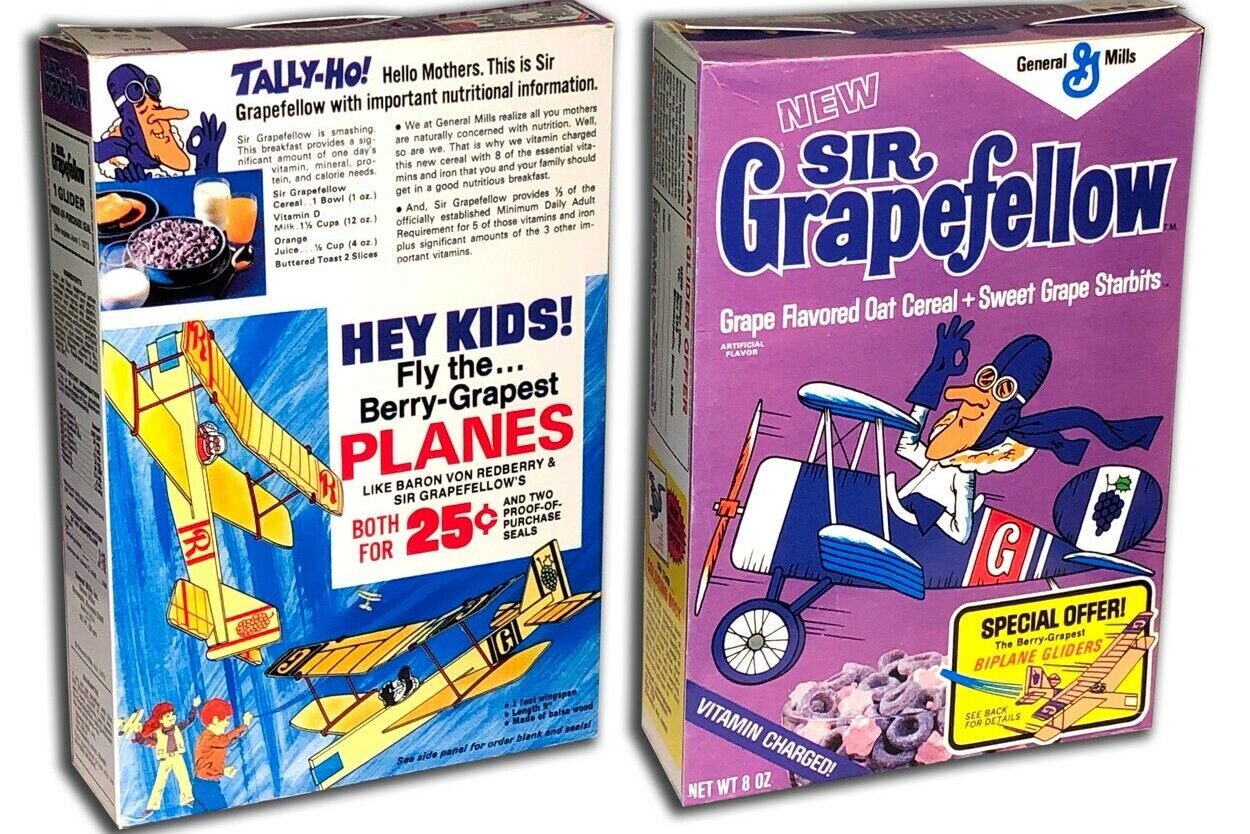
The ’70s were wild when it came to cereal flavors, and Sir Grapefellow might just be the strangest of them all. This was a grape-flavored cereal with little marshmallows, because apparently, someone at General Mills thought kids wanted to start their day with a bowl of artificial grape. It had a weird, sweet-but-tangy flavor that didn’t quite match the typical breakfast vibe. The marketing leaned hard into the character of Sir Grapefellow, a quirky British pilot, which only added to the bizarre charm. It was fun, it was colorful, and it was completely unlike any cereal that exists today. But the problem was that grape isn’t exactly a go-to flavor for breakfast, and the artificial taste was overwhelming.
Modern parents would never let this fly, and not just because of the questionable flavor choice. The artificial dyes alone would be a deal-breaker, and the fact that it was loaded with sugar and marshmallows made it more of a dessert than a breakfast. These days, cereal brands are constantly pushing whole grains, fiber, and lower sugar content, none of which Sir Grapefellow had. And let’s be honest, grape-flavored anything is a hard sell for kids unless it’s candy or juice. The ’70s were a different time, when cereal companies could basically do whatever they wanted, but something like this wouldn’t stand a chance today.
10. Koogle Chocolate Peanut Butter
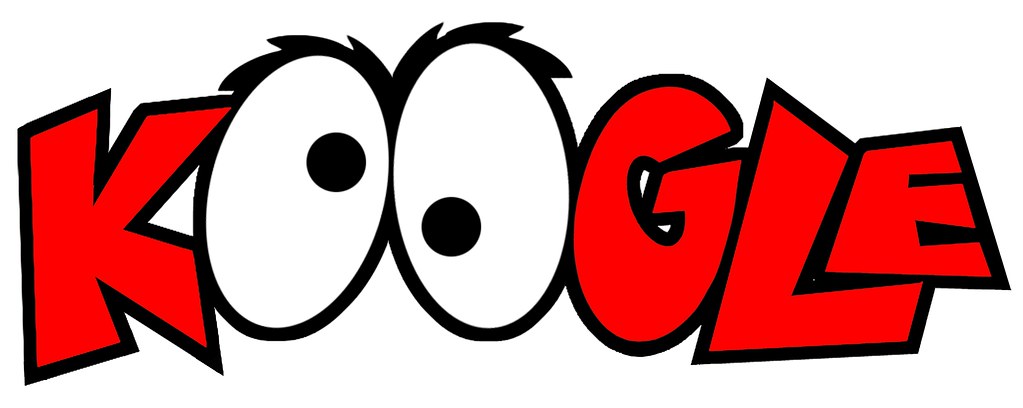
Yes, Koogle deserves another mention, because the chocolate peanut butter version was truly in a league of its own. Imagine peanut butter mixed with chocolate frosting, and you’ll have a pretty good idea of what this tasted like. It was smooth, sweet, and dangerously addictive, but it was also a nutritional disaster. The sugar content was through the roof, and the artificial flavors gave it a processed taste that didn’t quite resemble real chocolate or peanut butter. Parents probably thought they were just giving their kids a fun twist on peanut butter, but in reality, this was more of a dessert spread than anything else.
These days, chocolate peanut butter spreads still exist, but they’ve been reformulated to be at least somewhat healthier. Brands now focus on using real cocoa, natural ingredients, and lower sugar, whereas Koogle had no such concerns. The idea of mixing chocolate with peanut butter isn’t controversial, but the execution back then was pure ’70s excess. With peanut allergies on the rise and parents scrutinizing every ingredient on the label, a product like this would never make it onto store shelves today. It might still live on in nostalgic memories, but that’s where it belongs.
11. Pizza Spins
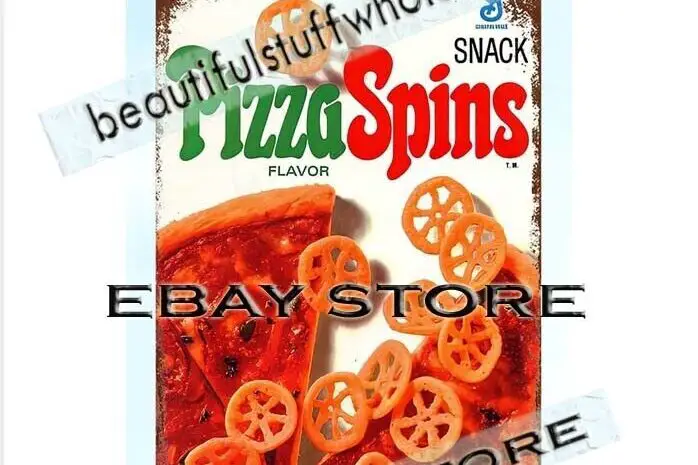
Pizza-flavored snacks are nothing new, but Pizza Spins were something else entirely. These crunchy little discs were supposed to taste like pizza, but in reality, they were more like a weird mix of tomato powder, artificial cheese, and a hint of oregano. They were aggressively seasoned, leaving a bright orange dust all over your fingers and anything else they touched. Kids loved them because they were different from regular chips, but looking back, they weren’t exactly a gourmet experience. The flavor was strong—too strong, really—and the aftertaste was something you couldn’t escape.
Today, Pizza Spins wouldn’t survive because of the ingredient list alone. Modern parents are all about natural flavors, and there was nothing natural about these. The cheese was artificial, the seasonings were excessive, and they were packed with sodium. Not to mention, pizza is already a pretty indulgent food, so turning it into an even more processed snack just doesn’t fit with today’s food trends. While some die-hard fans still wish for their return, they’re better left in the ’70s snack graveyard.
12. Whistles, Flutes, and Daisy’s
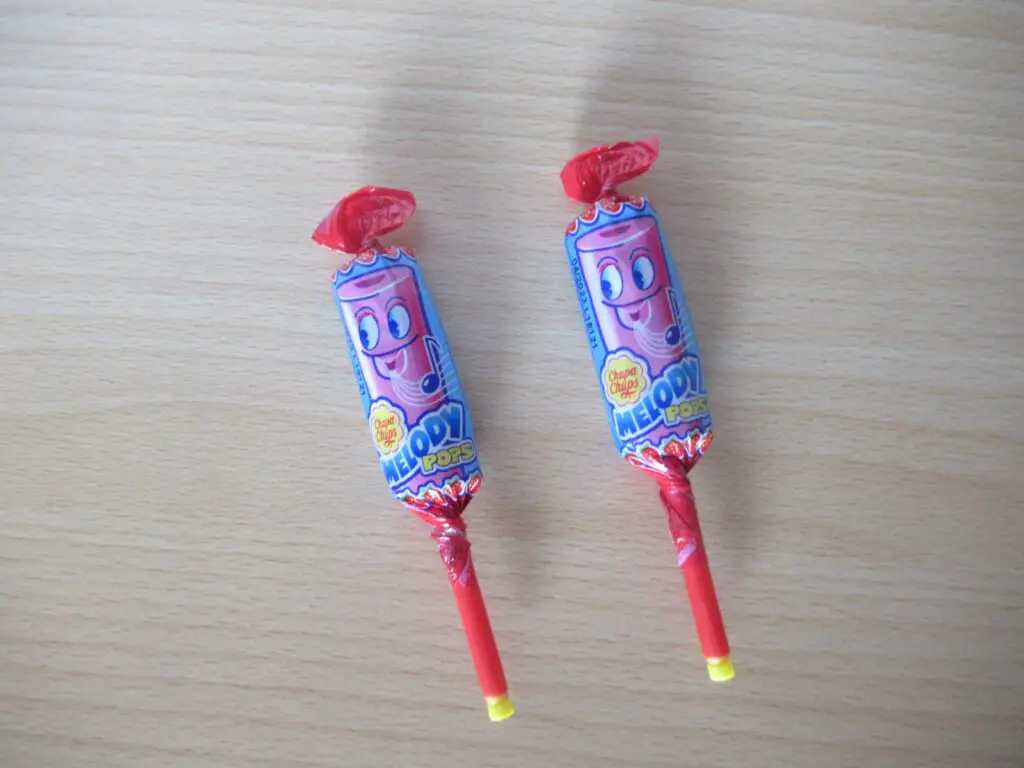
These were candy whistles that kids could actually blow before eating, which seems like a choking hazard waiting to happen. They came in different shapes, including flutes and flowers, and they made a real sound when you blew into them. The problem was that kids were encouraged to play with their food, which isn’t exactly a safe idea when it’s small, hard candy. The candy itself was basically just flavored sugar, but the gimmick was what made them popular. Unfortunately, it was also what made them dangerous.
There’s no way these would be allowed today. Between choking risks and the idea of kids running around blowing candy whistles in class, modern parents and teachers would shut this down immediately. Hard candies are already risky for younger kids, and adding a play factor just increases the danger. The ’70s had a lot of snacks that wouldn’t hold up to today’s safety standards, but this one seems like an accident waiting to happen. It was fun while it lasted, but there’s a reason we don’t see candy that doubles as a toy anymore.
13. Space Dust
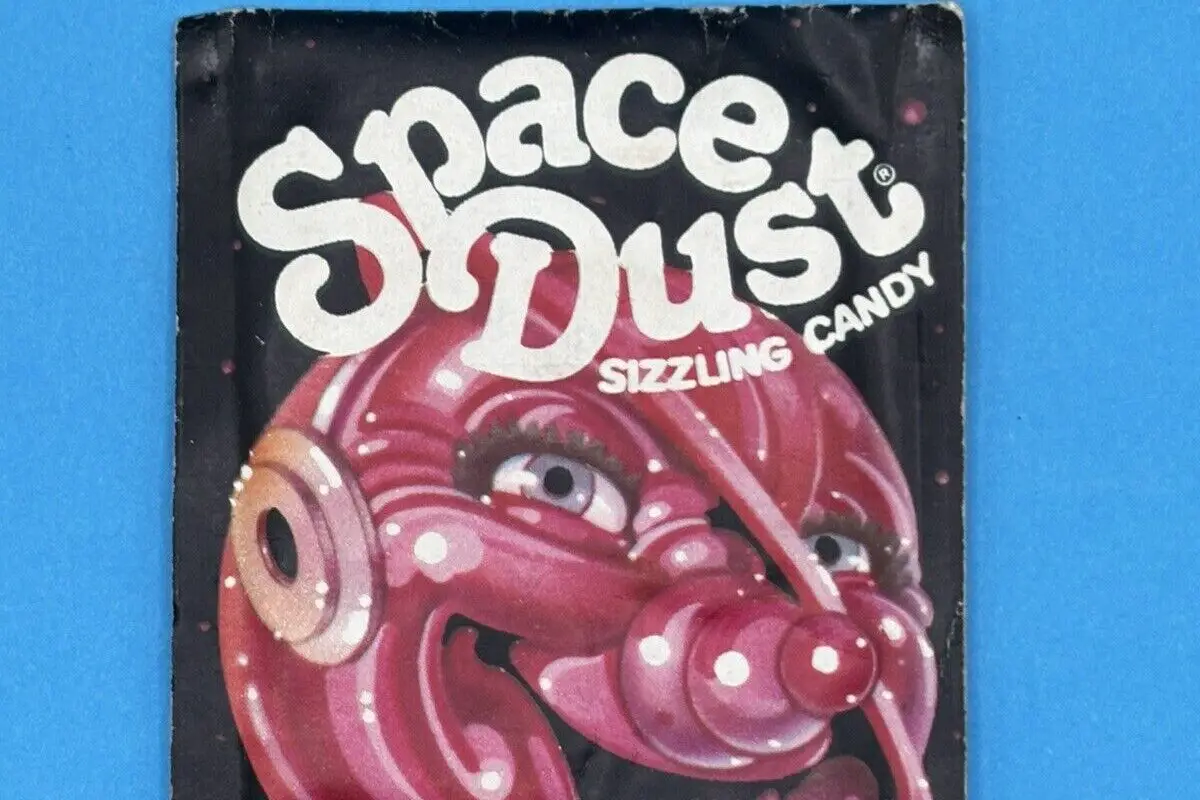
Space Dust was like Pop Rocks’ even wilder cousin—an ultra-fine, powdery candy that fizzed on your tongue in an almost alarming way. It came in small packets, and kids would dump the whole thing in their mouths, feeling the intense popping and sizzling sensation. The difference between this and Pop Rocks was that Space Dust was a powder, making it way easier to inhale accidentally. It was basically just sugar and carbon dioxide gas, designed purely for the fun of the experience rather than the taste. Kids loved it, but parents quickly realized the fine powder could be dangerous, especially if inhaled the wrong way.
It wasn’t long before Space Dust started causing concerns among parents and schools. There were fears that kids could choke on it, and some even worried that it looked too similar to illegal substances. While Pop Rocks survived, Space Dust quietly disappeared, likely due to the safety issues. Today, candy companies wouldn’t dare market something that encourages kids to pour an ultra-fine powder directly into their mouths. Between the potential for choking and the mess factor, it’s the kind of thing that would get banned from lunchrooms immediately. It was a fun but risky ’70s snack that wouldn’t stand a chance today.
14. Tuna Twist
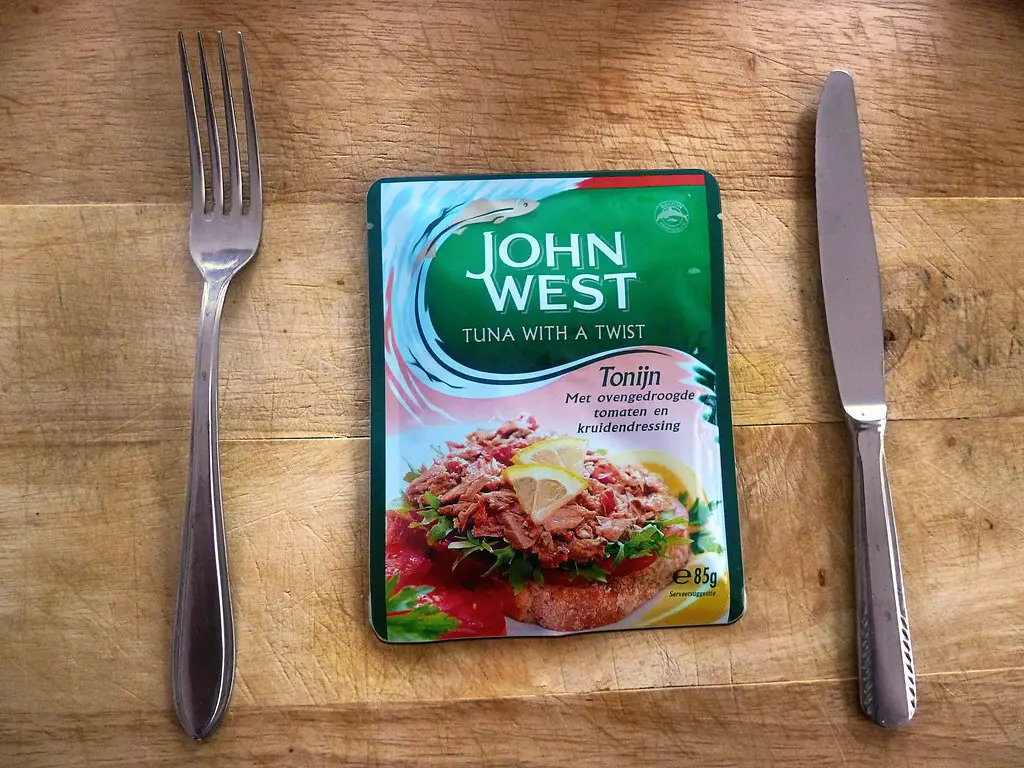
Tuna Twist was one of the weirdest snack-adjacent products to come out of the ’70s, and looking back, it’s shocking that anyone thought it was a good idea. It was a seasoning mix designed to be stirred into canned tuna to make it “more exciting,” but in reality, it just made everything taste more artificial. It came in flavors like Cheddar, Onion, and Italian, each packed with preservatives, artificial seasonings, and an excessive amount of sodium. The idea was that it would make tuna salad sandwiches more appealing to kids, but instead, it turned a simple, healthy food into something highly processed and questionable.
There’s no way Tuna Twist would survive today’s clean-eating movement. People are far more aware of what goes into their food, and a packet of mystery seasonings designed to alter the taste of canned tuna wouldn’t sit well with modern consumers. The excessive sodium alone would be enough to get it banned from most grocery stores, and parents today are more likely to mix tuna with fresh ingredients like lemon, avocado, or Greek yogurt instead of dumping in a packet of artificial flavors. While the ’70s were full of strange processed food experiments, this one is better left in the past.
15. Dippin’ Chips
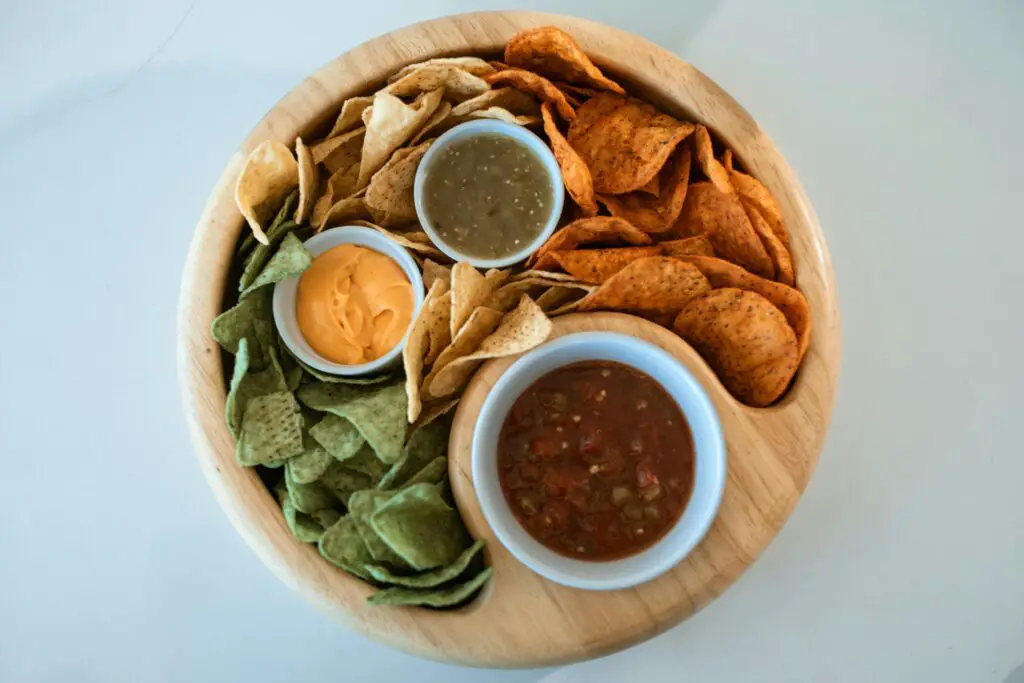
Dippin’ Chips were like regular potato chips but with a thick, extra-ridged design that made them almost too sturdy for their own good. They were specifically made to hold up to heavy dips without breaking, but the trade-off was that they were so dense and crunchy that they could almost hurt to bite into. Unlike the light, crispy chips we know today, these had an almost cracker-like texture that made them feel more processed than natural. The seasoning was intense, sometimes overwhelming, and they left your fingers coated in a greasy, salty residue. While they were great for dipping, they were also loaded with sodium and artificial flavors.
Today, chips have moved toward being airier, crispier, and less aggressively salty. Health-conscious brands focus on baked or kettle-cooked options with fewer additives, and ultra-thick chips like Dippin’ Chips wouldn’t fit that trend. Plus, with so many dietary preferences now—gluten-free, low-sodium, non-GMO—these wouldn’t make the cut unless they were totally reformulated. The over-the-top crunch factor also made them a bit of a hazard for younger kids, and modern parents are much more cautious about choking risks. While we still love a good dip-friendly chip, these particular ones are a relic of a time when snack companies just did whatever they wanted.
